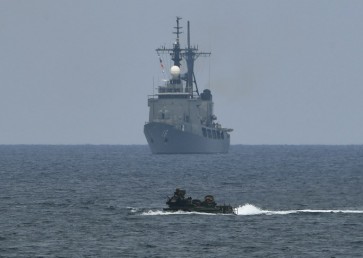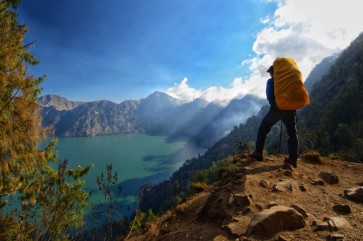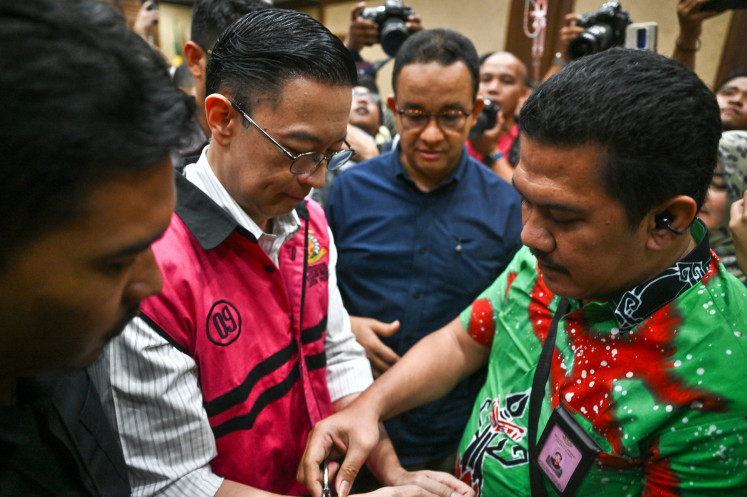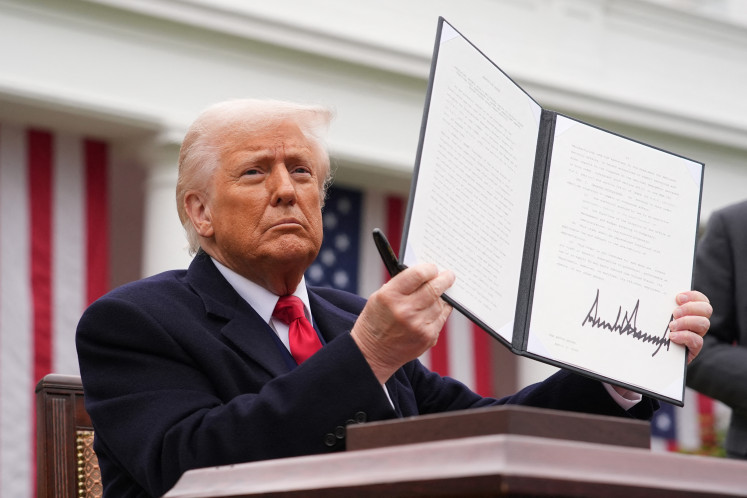Popular Reads
Top Results
Can't find what you're looking for?
View all search resultsPopular Reads
Top Results
Can't find what you're looking for?
View all search resultsMembers need outside help to make even progress: Diplomat
Development gaps between ASEAN’s members remains a cause for concern
Change text size
Gift Premium Articles
to Anyone
D
evelopment gaps between ASEAN’s members remains a cause for concern. The Jakarta Post’s Rangga D. Fadillah and Yohanna Ririhena spoke with Brunei’s Second Minister for Foreign Affairs and Trade, Lim Jock Seng, about how to narrow the gaps. Below are excerpts from the interview:
Question: What are your ideas for lessening the development gap between ASEAN’s more developed and less developed members?
Answer: Narrowing development gaps is one of the four pillars of the AEC [Asian Economic Community]. There is a growing realization at the ASEAN level that there is a need for a broader and more strategic approach to ensure that ASEAN is a region of equitable economic development.
ASEAN is currently looking at the enhancement of the third pillar, so an expansion of the IAI [Initiative for ASEAN Integration] will assist in lessening the development gap. ASEAN will have to bring in donors and funding from our ASEAN Dialogue partners.
What are the biggest hurdles in establishing ASEAN Economic Community by 2015?
There are a lot of barriers. But with political will and understanding, we can work and move together towards the AEC 2015.
What’s the best way to improve ASEAN’s competitiveness and investment climate?
ASEAN will need to enhance its work by undertaking regulatory reforms. We must market ourselves better as single market and production base, and thereafter enhance the perception of ASEAN as a single investment FDI destination.
At the same time, we need to ensure our domestic regulations are coherent. This will make a marked difference in ASEAN’s competitiveness and its attractiveness as an investment destination.
How can ASEAN’s economy better withstand global economic turmoil and uncertainties?
This is complex matter that involves finance, not only trade. Confidence is key for addressing the volatility of the stock market. This will need global cooperation for a global solution.
Within ASEAN, we are undertaking an ambitious plan to not only integrate among each other but also to integrate with the wider global economy.
Recent efforts have primarily being aimed at establishing ASEAN as a single market and production base, which in turn will boost trade among member countries. However, this alone will not be enough. We need to intensify our efforts to facilitate trade and investment across our borders.
Cooperation at the sub-regional level, such as what we are trying to achieve in BIMP-EAGA [East ASEAN Growth Area], supports these efforts because it strengthens relations at the local government level across national boundaries.
At the same time, our work to integrate ASEAN into the global economy has resulted in a shift in our international trade flows. Now, we are no longer reliant on our traditional trading partners in the west. We are enhancing linkages with countries and regions throughout the world, both developed and developing alike. This ensures that ASEAN will not bear the full brunt of economic slowdowns occurring in one part of the world.
What infrastructure is needed to solve ASEAN’s connectivity problems?
The ASEAN Master Plan on Connectivity, which the leaders endorsed at the 17th ASEAN Summit in Hanoi in October, puts equal focus on enhancing both “soft” and “hard” connectivity. By this, I mean not only having the right infrastructures like roads and bridges, but also having the right legal frameworks and programs in place to allow the movement of people, goods, services and investments throughout the region.
Addressing connectivity gaps within the region and individual member states will neither be easy nor cheap. It is for this reason that at the regional level, ASEAN has identified its priority projects for early completion.
ASEAN member states need to address regulatory impediments. Nationally, ASEAN member states have also identified their own connectivity needs, which will be addressed in due course.
The private sector will be important to help us identify these regulatory impediments.
How can ASEAN maintain food and energy security?
We are already undertaking a lot of work to secure food and energy in the region. There are several significant initiatives such as the ASEAN Petroleum Security Agreement [APSA]. With China, Japan and Korea, we have the ASEAN Plus Three Emergency Rice Reserve [APTERR].
Safeguarding supplies alone is not enough. We need to ensure the availability and affordability of food and energy for people in the region
We must strike a fine balance between crops grown for food and those for renewable energy.
Similarly, more needs to be done at the international level to address the volatility of commodity prices in the global markets.










